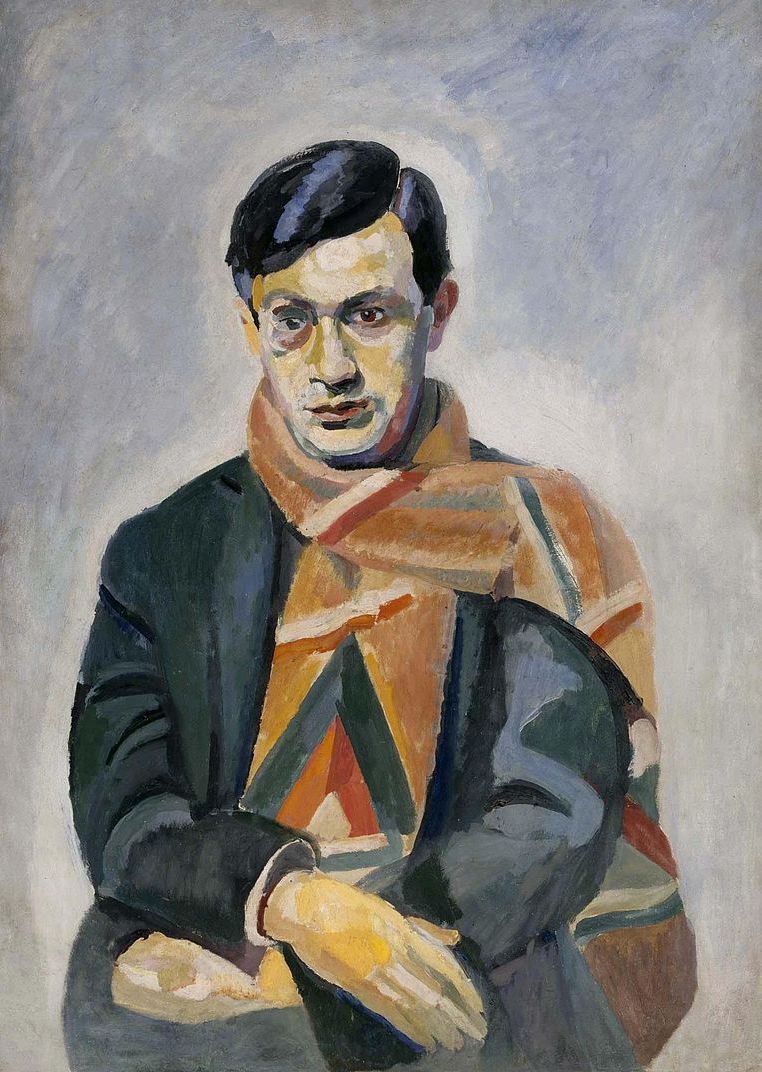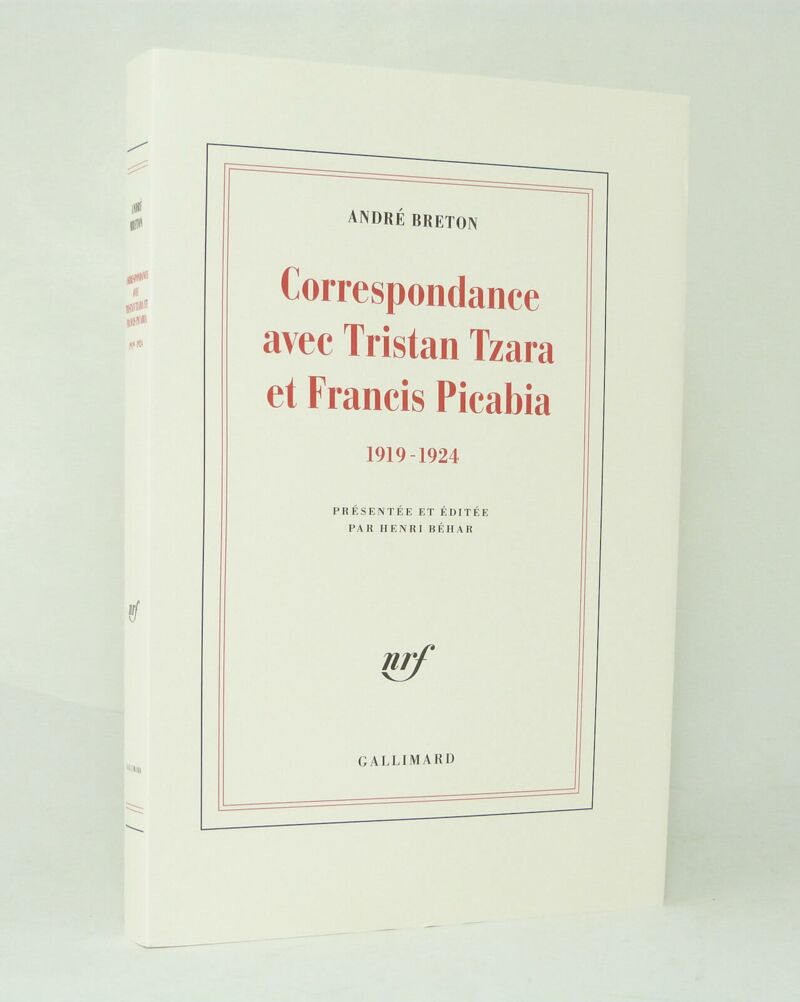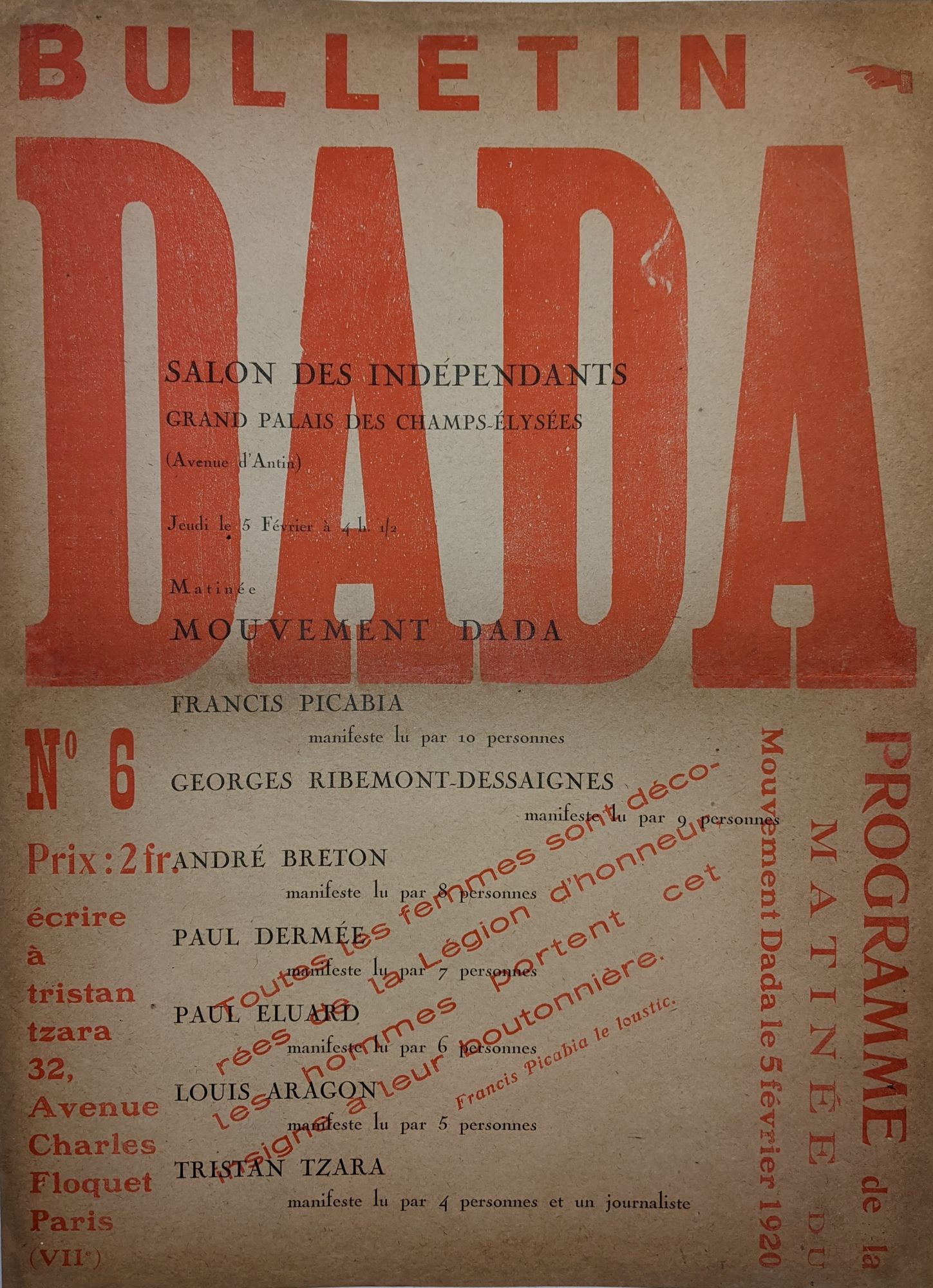
Cumple 100 años el dadaísmo, la vanguardia que postulaba la vida como
Tristan Tzara (French: [tʁistɑ̃ dzaʁa]; Romanian: [trisˈtan ˈt͡sara]; born Samuel or Samy Rosenstock, also known as S. Samyro; 28 April [O.S. 16 April] 1896 - 25 December 1963) was a Romanian avant-garde poet, essayist and performance artist.. Francis Picabia: Our Heads Are Round so Our Thoughts Can Change Direction. Nov 21, 2016.

Gli artisti come Picabia e Tzara Soluzioni - otto lettere: DADAISTI Per le curiosità vedi: Gli artisti che seguirono Picabia e Tzara {Il primo Novecento fu segnato dall'esplosione di avanguardie artistiche disseminate in vari punti d'Europa, che impressero una svolta significativa.}. Trova definizione: (oppure Ricerca parole parziali)

EL RINCÓN DE MIS DESVARÍOS TRISTÁN TZARA Y FRANCIS PICABIA DOS
Francis Picabia 1879-1953 Original title Réveil Matin Medium Ink on paper Dimensions Support: 318 × 230 mm frame: 500 × 410 × 45 mm Collection Tate Acquisition Purchased 2011 Reference T13345 Summary Display caption Summary

Francis Picabia Marcel Duchamp, Paul Klee, Magritte, Tristan Tzara
Francis Picabia ( French: [fʁɑ̃sis pikabja]: born Francis-Marie Martinez de Picabia; 22 January 1879 - 30 November 1953) was a French avant-garde painter, writer, filmmaker, magazine publisher, poet, and typographist closely associated with Dada. [1]

André Breton, Correspondance avec Tristan Tzara et Francis Picabia En
Surrealism , Photomontage Tristan Tzara Summary Accomplishments Important Art Similar Art and Related Pages "Art has not the celestial and universal value that people like to attribute to it. Life is far more interesting. Dada introduces it into daily life. And vice versa." 1 of 12 Summary of Tristan Tzara

FRANCIS PICABIA. Retrato Tristan Tzara. 1918. Tristan tzara, Surreal
Francis Picabia's stay in Switzerland made itself felt: Tzara was very keen on getting in touch with him. Both wrote emphatic obituaries on Guillaume Apollinaire, who had died in November 1918. Edition: According to Tristan Tzara (see his letter to Francis Picabia, September 7, 1918), Dada 3 was printed in an edition of two thousand copies.
tristan Tzara et Francis Picabia Tristan Tzara et Francis Picabia
Tristan Tzara ( French: [tʁistɑ̃ dzaʁa]; Romanian: [trisˈtan ˈt͡sara]; born Samuel or Samy Rosenstock, also known as S. Samyro; 28 April [ O.S. 16 April] 1896 [1] - 25 December 1963) was a Romanian avant-garde poet, essayist and performance artist.

Correspondance avec Tristan Tzara et Francis Picabia (19191924
DADA became an important artistic movement in its various expressions in literature, painting, sculpture, theater, film and music, focusing on chance, abstraction, humor and the unconscious. In 1919, Picabia contributed to the Salon d'Automne in Zürich, and with Tristan Tzara, to the publication of DADA 4-5. Returning to Paris, he became one.

Ernst Wilde Photos from Ernst Wilde's post Tristan tzara, Dada art
FRANCIS PICABIA 1879 - 1953 UNTITLED (À TRISTAN TZARA) Signed Francis Picabia and dedicated à Tristan Tzara (lower right) Brush and ink and pencil on paper 8½ by 7⅛ in. (21.5 by 18 cm) Framed: 16½ by 14½ in. (41.9 by 36. 8 cm) Executed circa 1919. Condition report Provenance Tristan Tzara, Paris (acquired from the artist by 1963)

Bulletin Dada No.6 Tristan Tzara, Francis Picabia First edition
PICABIA, Francis (1879-1953). Unique eunuque. Introduction by Tristan Tzara. Paris: Au Sans Pareil, 1920. 8° (186 x 137mm). Printed notice of publication laid-in. Self-portrait frontispiece. (Paper evenly yellowed, the front blank with some staining from the front wrapper touching the inscription.) Original wrappers printed in black (spine with a long tear, edges browned, light soiling); in a.

tristan Tzara et Francis Picabia Tristan Tzara et Francis Picabia
The next five issues of Picabia's journal reveal turmoil growing among the Dadaists and suggestions of a shift in Picabia's allegiance from Tzara to Breton. By issue number 16, it was clear that Picabia had left the Dada movement and was focusing on the activities of a newly forming group under the guidance of Breton. In the nineteenth and.

Francis Picabia. Untitled. 1917 Dada art movement, Funny art history
A manifesto (derived from a Latin word meaning "clear," which is ironic in this case) is a document that states the beliefs and objectives of a group. Many manifestos are political, but artists began issuing manifestos declaring their aesthetic aims in the 1880s.

Optophone I Francis Picabia WikiArt. Tristan Tzara, Op Art, Marcel
Francis Picabia's career is defined by varied activities as a painter, poet, editor, and international impresario of the avant-garde. Picabia was born into a wealthy Spanish-French family in Paris, and from a young age threw himself into the most extreme currents of modern art.

FRANCIS PICABIA UNTITLED (À TRISTAN TZARA) Impressionist & Modern
Picabia, the provocateur, was back home. Picabia continued his involvement in the Dada movement through 1919 in Zürich and Paris, before breaking away from it. He denounced Dada in 1921, and issued a personal attack against Breton in the final issue of 391, in 1924.

Francis Picabia Artistas, Pinturas, Arte
Tristan Tzara Romanian-born French poet and essayist known mainly as the founder of Dada, a nihilistic revolutionary movement in the arts, the purpose of which was the demolition of all the values of modern civilization. The Dadaist movement originated in Zürich during World War I, with the. Francis Picabia, and Marcel Duchamp. Tzara wrote.

Literature, Francis Picabia Art Experience NYC 絵
In addition to 391, Picabia produced another journal, Cannibale, while contributing to Tristan Tzara's Dada, Paul Éluard's Proverbe, and André Breton's Littérature. So, along with Éluard.